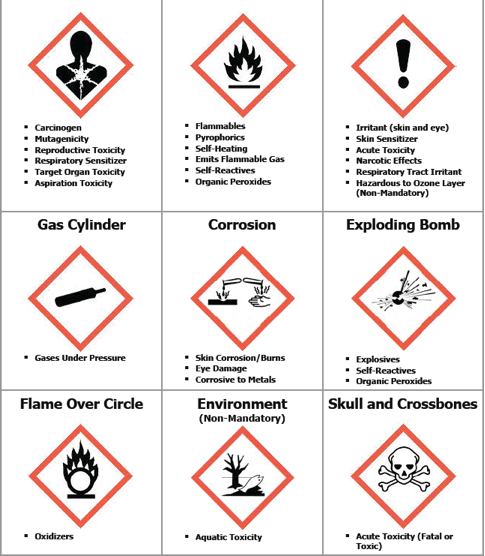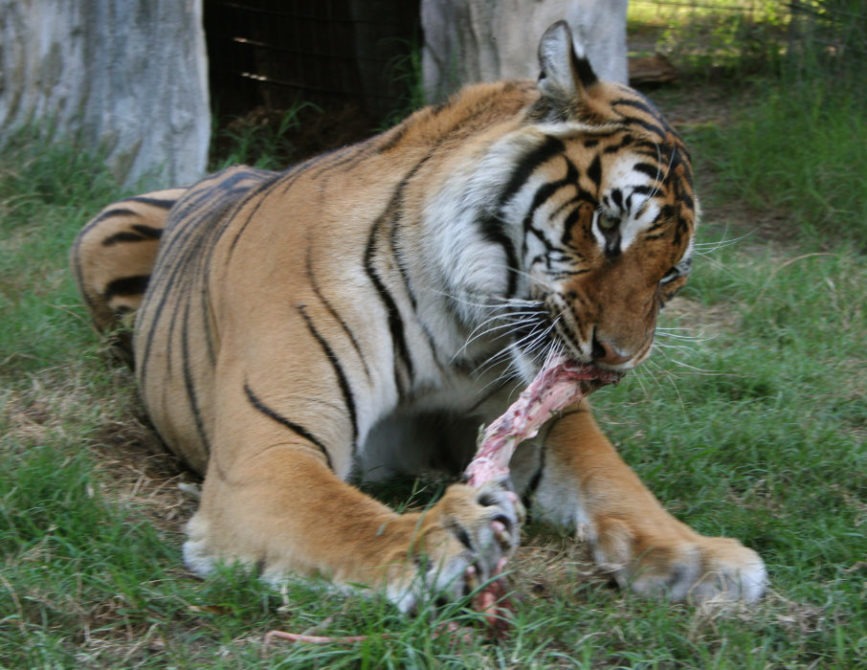Restraint
RESTRAINT
The most common need for restraint is when vaccinating a big cat. Here are a few ways to deal with vaccines that can also be used for sedating a big cat.
You will find many times when it is necessary to pick up and restrain an exotic cat, and hopefully, you will have started acclimating the cat to this behavior early in life. If the cat is small and can be picked up from behind, it is better than taking on the cat face to face. With a tame cat, you can place one hand around the middle of his body, then reach your fingers up from under the chest to cross and hold the front paws. This is critical if he has claws and just cuts down on the squirming if he does not. Keep your index finger between the paws for a better grip. Lift him up close to your body with his hips behind your back and elbow. If the cat is frightened at first you can lift them up, partially by the scruff of the neck and then lift his weight by cradling his back feet, again with one finger between them for a better grip. Except in extreme emergency we never allow a cat to dangle from his scruff. (Like when breaking up a cat fight by yourself, when you have to hold two cats off of each other… make sure a copy of your Will is on file.)
If the cat is really freaked out, or not tame we throw a towel or blanket over them and then scoop up the cat, wrapping the towel or blanket underneath as we lift. Depending on the size of the teeth, you may wish to don gloves before such a maneuver. As a last resort you can use the noose snare or a makeshift one of a leash or piece of rope. Slip the loop over the head A N D O N E FRO N T LEG and then tighten the loop and lift the cat into a carrier or up onto the table. If the cat must be treated in this manner, pull the leash forward and grasp the back legs, or the base of the tail, to stretch the cat out. This is much easier said than done and can be very dangerous, because the exotic will flip and twist until they kill themselves.
If the cat is tame and you have been working with him, the less restraint used, the better. Wild cats usually get more worked up over the restraint than the actual treatment. If you act confidant and speak kindly, but authoritatively you may be able to do things such as bathing, grooming and medicating without much more than a hand resting at the scruff to let them know that you can immobilize them at any moment they get too carried away.
| https://www.bigcatrescue.biz/ |
| https://www.bigcatrescue.biz/ |
Tame Cat Restraint: If you have two people and the cat likes to be carried, then one person holds the cat, with the cat’s body facing his, the face of the cat looking back over his shoulder and the back feet securely cupped at waist level. The other person, can hold the scruff and give a shot, or can come around from behind the person holding the cat and give a pill. If there is danger of the cat biting the person holding, then the cat can be placed on a table, belly down, and either held down or blanketed down. If the cat is very tame, but very big, one person can sit over the cat as though they were going to ride him, and using their knees, press from either side, crossing their feet behind the cat, so that he does not back out. With their hands, they can scruff the cat with one hand and either hold the front paws, or the muzzle with the other hand. Sometimes, even with tame cats, we have found it helpful to slip a muzzle over their face. We use the fabric type that cover the eyes and have a velcro close in back. When the cat cannot see, he will often sit very still, but hold him firmly just in case.
Wild Cat Restraint: We like to use a net for most purposes. We have several nets in different sizes. When the kittens are young we play with them and the nets so that they do not run at the sight of them. We custom make our nets and use rope netting, like you would use for commercial fishing. These have holes about an inch in diameter, and we can pull the scruff out through the net to give an injection or we can pull an ear out to treat for mites or to inspect. We make our nets long enough that we can fit the whole cat in and then double the net back over the hoop, so that the cat cannot escape. At the bottom, there is a drawstring and when we are through, we pull the bow and the cat can run out forward. They don’t back out well. If you will be dealing with the cat’s head, we leave the drawstring loose enough that the cat can get his head through, but not the rest of his body, while being tangled in the net. Anything a cat can get his head through, the rest of his body will follow without much trouble. I have seen a cat flatten down and slither under a closed interior door.
If you do not have a net and the cat is really getting crazy, you can tape their legs together and you can tape their muzzles closed with surgical tape or gauze. Use the kind that sticks to itself and not the fur if possible. Wild cats have incredible strength and you will need to insure that they do not thrash about in such a manner as to hurt themselves worse.
 Transporting an injured cat can be very dangerous. No matter how tame the cat may be, they can lose all sense of perspective when they are in pain. You should not struggle unnecessarily with an injured cat because you are using what little strength he may have and cause him to regress into further shock and collapse. If you suspect a spinal injury, the cat should be lifted up in a blanket so that he is not turned or twisted. A carrier with a soft blanket, or hay, is the best transporter. If the cat is very agitated, you can throw a blanket over him and drop a cat carrier over him. Using a hard piece of cardboard, you can slide it up under him and scoop him into the carrier. Shut the door as you pull out the cardboard and leave the blanket for him to hide in.
Transporting an injured cat can be very dangerous. No matter how tame the cat may be, they can lose all sense of perspective when they are in pain. You should not struggle unnecessarily with an injured cat because you are using what little strength he may have and cause him to regress into further shock and collapse. If you suspect a spinal injury, the cat should be lifted up in a blanket so that he is not turned or twisted. A carrier with a soft blanket, or hay, is the best transporter. If the cat is very agitated, you can throw a blanket over him and drop a cat carrier over him. Using a hard piece of cardboard, you can slide it up under him and scoop him into the carrier. Shut the door as you pull out the cardboard and leave the blanket for him to hide in.




